Dell U2412M - 16:10 IPS without Breaking the Bank
by Chris Heinonen on February 28, 2012 9:00 AM ESTDell U2412M Color Uniformity and Gamut
Of course if only the center of the panel looks good, it’s going to make images look bad with color shifting and other undesirable results. Taking a set of nine measurements around the screen lets us evaluate the screen uniformity.
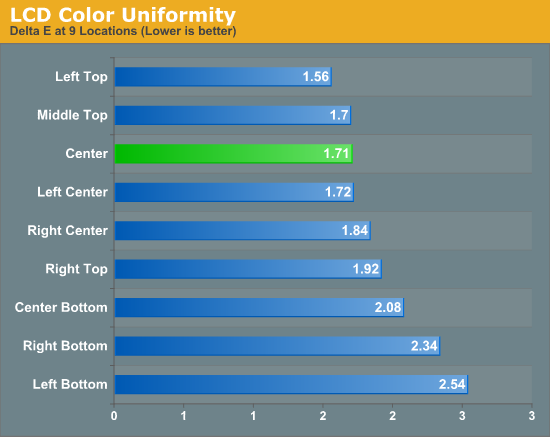
There is a bit of a shift around the screen that is most noticeable in the corners and with the grayscale. The average dE for all the measurements manages to stay below 3, but all the blue swatches stay above 3 across the display. At a couple locations certain colors manage to rise above 3, but for the most part it is just blue. The rise in the grayscale is the most noticeable thing, which is what causes the high average dE results in the corners.
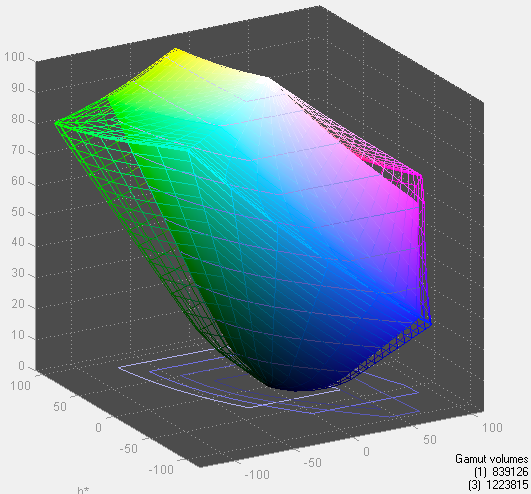
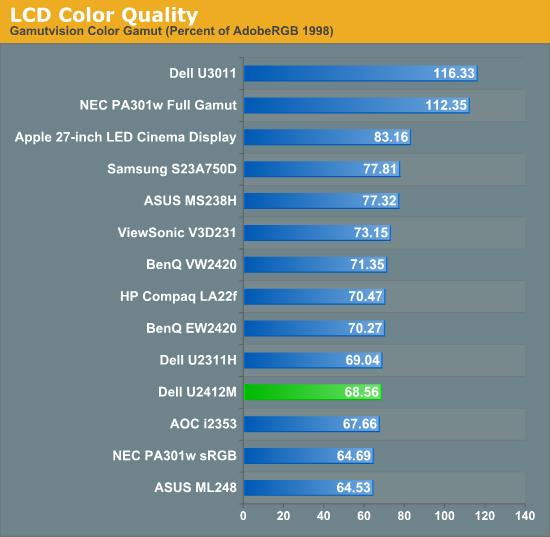
The Dell has around 70% of the AdobeRGB colorspace, which is close to the sRGB standard. We expected this as our blue dE values were so high and if we could do more than 70% of the AdobeRGB gamut we would see more accurate results there. However, I don’t think anyone considering the U2412M with it's high blue dE values will reject it because of its slightly smaller than sRGB gamut.


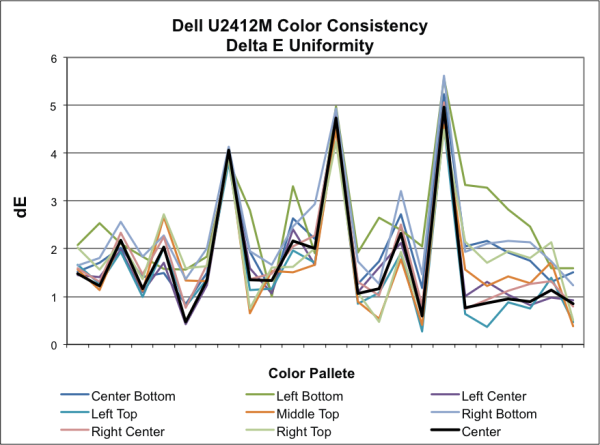
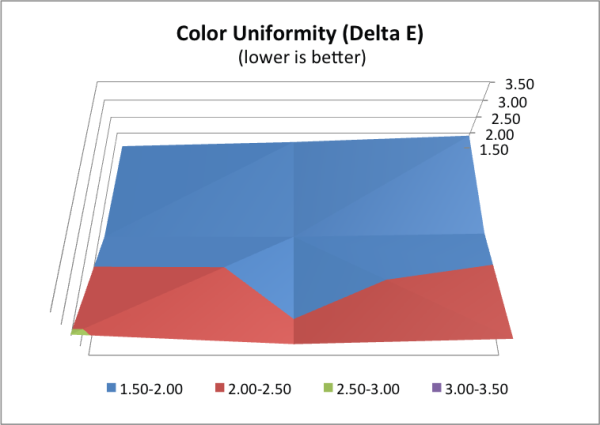








143 Comments
View All Comments
fausto412 - Tuesday, February 28, 2012 - link
Monitor Calibration and ReviewsI see all these monitor reviews where the monitor is calibrated for most accurate colors and blacks and all that...how does a person who bought the monitor go about getting it calibrated? are there local places who do this stuff? when they do it do they save the calibration on your screen?
cheinonen - Wednesday, February 29, 2012 - link
For calibrating the display you need a colorimeter or spetrometer and software. Most include some sort of PC software, or you can use something like DispCalGUI for free. Since these involve using the LUT in your video card, you can't have it done somewhere and then bring it back home, though you could borrow/rent hardware to get it done most likely.For testing, I use an i1Pro for the calibration, which runs around $1,000 new, and an i1DisplayPro for testing the black level (around $300) since it is more accurate at reading low levels of light, but worse at measuring colors. You can use something as simple as an i1DisplayLT, though it will start to drift over time and after 2-3 years you can't rely on it to be accurate anymore and would have to buy another one. The Colormunki series has a spectro that is pretty cheap for use with a monitor, but a cheap spectro is still $400-500 or more.
ggathagan - Wednesday, February 29, 2012 - link
If the big box stores were smart, this is the kind of service they would offer : in-home monitor/TV calibration using a customer's actual setup.hechacker1 - Wednesday, February 29, 2012 - link
They do, THX calibration and whatnot, but they charge an insane amount. Basically, it's better to just buy the colorimeter and do it yourself with various software.It's a good investment if you have many screens. Once you have it, it's a pain to work on any non-calibrated monitor, knowing just how bad it is.
Confusador - Tuesday, February 28, 2012 - link
"...still, I thought the explanation on the previous page would be useful for everyone."It was, thank you for keeping it in. It's always nice to know the rationale behind the testing method.
On a side note, I'm glad to see Dell at least trying to have a reasonably priced 16:10, but it still saddens me that we haven't seen much improvement in monitors (in terms of price/resolution) for so long. I can only dream that with high resolution tablets coming out, we'll see some of that trickle into desktops. For me at least, vertical space is at a premium because I have the horizontal covered by virtue of simply having more than one display.
Impulses - Wednesday, February 29, 2012 - link
I know right? Next gen tablets and phones are running higher resolutions than like 80% of laptops out there, and the average desktop display isn't faring much better. I don't see how market economics are allowing display manufacturers to create these amazing new 10" displays yet desktop displays have languished for so long...ggathagan - Wednesday, February 29, 2012 - link
I doubt you'll ever see that trend in discrete monitors.The entire reason for higher resolutions for a laptop/tablet is due to the physical constraints on the screen size.
If you want a higher resolution for a desktop monitor, you buy a larger monitor.
From a manufacturing standpoint, I would guess that quality control issues increase geometrically when you work with larger physical sizes. It's probably a lot easier to create a high resolution screen at 10 inches than it is at 24 or 27 inches.
Unless there's a compelling reason to do so, I doubt screen manufacturers are eager to take that on.
Far better to concentrate R&D efforts on 120Hz IPS panels and the like.
Zolcos - Wednesday, February 29, 2012 - link
One way you could improve this part of the review is to use the same chart method that you used for power draw -- each monitor having two bars, one for "real world" input lag and one for "worst case" input lag.toyotabedzrock - Wednesday, February 29, 2012 - link
No tests of how it handles color gradients?If we are to pay more for an IPS display then it needs to be 8bit.
MadAd - Wednesday, February 29, 2012 - link
1200 lines is a start, but am still waiting for the ultimate answer to a monitor upgrade24", 120hz, 1200 lines and displayport
is that too much to ask?